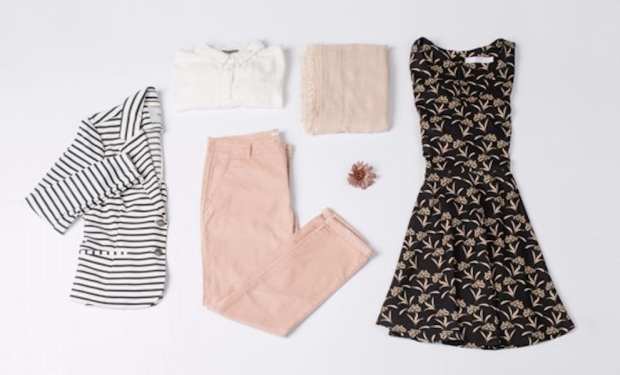Why Thinking Local Is Critical In Curated Fashion

For most U.S. consumers, Lookiero is probably not all that familiar a name, as the Spain-based firm founded in 2015 operates entirely in the European Union — specifically in the U.K., France, Spain, Luxembourg, Belgium and Italy. But even if the name is not familiar to U.S. shoppers, its business model may ring a bit familiar.
Lookiero is an online shopping platform that asks customers to fill out a brief online questionnaire to assess their personal style, and then turns that data over to both its in-house staff of personal stylists and its proprietary learning algorithm. Working in tandem, that stylist and the algorithm curate a monthly box of five fashion items or accessories tailored to be a match for the consumer’s preferences. The customer keeps what they like, sends back what they don’t and gets a discount for choosing to keep it all.
Though relatively new to the scene, Lookiero has grown up relatively quickly with 1 million active users on the platform across the EU and annual sales that picked up by 200 percent between 2017 and 2018, according to the firm.
That powerful uptick is credited to the firm’s grasp on harnessing the power of smart algorithms on its front and back end. According to Founder Oier Urrutia, Lookiero’s artificial intelligence (AI) on the front end means understanding a customer’s answers and choices well enough that it can predict with great accuracy what goods they are likely to keep, and what goods are likely to be sent back. On the back end it meant developing a suite of warehousing systems capable of shipping 3 million items of clothing all over Europe this year alone.
The reason that model might sound familiar to many of our longtime readers is that it resembles in many ways the model of U.S.-based Stitch Fix. And for the team at Lookiero, the name Stitch Fix is becoming a lot more familiar, since the U.S. startup has been expanding into Europe for the last year.
It is a challenge to Lookiero, a fact that Urrutia is quite open about. Stitch Fix is older, it has a lot more money and it’s quite a bit larger in terms of customer base. And yet, the team at Lookiero remains mostly unfazed by the entrant of a new — and large — competitor into their market.
“We’re not worried. Of course they have some strengths, they have a lot more money than us. But we have a lot of local knowledge that they don’t,” Urrutia told Sifted.
And local knowledge in the fashion curation game, he noted, is a big advantage that is unfortunately easy to overlook from the outside. On the front end, he said, it means knowing the customers better and better being able to meet their needs. On the back end, the nature of the challenge is more technical, Urrutia said, and realizing that moving millions of items across the European Union is probably quite a bit different than what an American firm will be used to dealing with.
“We are not like the states in the U.S.,” he pointed out. “Once you cross the border the taxes are different, logistics are different, you have to adapt to all of that. It has taken a lot of effort, but we have built our pan-European infrastructure now. That’s an important strength.”
Moreover, he said, that consumer-facing challenge is real and harder to overcome than one might think. European consumers have different tastes, habits and brand preferences than their American counterparts. In fact, he said, it is more granular than that — European consumers in different markets within Europe have individual refinements and quirks to their preference set. A platform meant to successfully curate containers of fashion items needs to be able to navigate those differences, and Lookiero has two big advantages in that regard.
The first, Urrutia said, is how tailored the firm’s fleet of personal shoppers is to the markets they serve. In France shoppers deal with French personal shoppers, in Italy they talk to other Italians. The second advantage is a head start: Lookiero’s learning AI has had two years to set up a client network that has elicited millions of data points about the market. By the numbers, Stitch Fix outguns Lookiero, with 5,800 employees, including 3,000 stylists and 75 data scientists vs. Lookiero’s 350 total employees and 40 tech workers. But all of Lookiero’s employees are punching far above their weight class in terms of regional speciality, according to Urrutia, and they believe it will be decisive.
In fact, he said, Stitch Fix’s entrance may even end up helping Lookiero more than it ends up hurting the firm. In the course of entering the EU — and marketing to trumpet its arrival — Stitch Fix might just save Lookiero the trouble of having to educate consumers about curated fashion, letting Lookiero shortcut right to competing for their spend.
